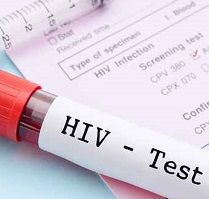Article
Why We're Missing Some Acute HIV Diagnoses
Author(s):
A test for acute HIV infection should be offered to those who report having symptoms within the last two weeks, not just those experiencing them at the time of testing, a new study suggests.

A test for acute HIV infection should be offered to those who report having symptoms within the last two weeks, not just those experiencing them at the time of testing, a new study suggests.
In an analysis published in the March 2016 issue of Emerging Infectious Disease, researchers aimed to determine the proportion of people with acute HIV infection with ongoing or recent symptoms.
Clinical diagnosis of acute HIV infection at the point of seroconversion is difficult because the initial signs and symptoms often go unrecognized. While the commonly used antibody test used in screening programs reliably identifies existing infections, but does not pick up acute infections. The Centers for Disease Control and Prevention recommend including a fourth generation HIV-1 p24 antigen-based immunoassays, but sensitivity may not exceed 80% and many community screening programs don't offer it.
Researchers at the University of San Diego conducted an analysis to determine the proportion of people with acute HIV infection with ongoing or recent symptoms, defined as with the previous two weeks, among 90 men who had been given a diagnosis of acute HIV infection between 2007 and 2014 through a community-based testing program.
Acute HIV infection was defined as having a negative or indeterminate HIV antibody test result in the presence of detectable HIV-1 RNA, indicating an estimated infection date within the previous 10 days.
The team, led by Martin Hoenigl, M.D., obtained blood samples for CD4 and viral load testing at first visit after HIV diagnosis, along with detailed information about occurrence, duration, and start and stop dates for 11 signs and symptoms, including, headache, pharyngitis, and myalgia. Hoenigl is an Infectious Diseases Fellow at the Medical University of Graz in Austria, and now a postdoctoral scholar at the Antiviral Research Center of the University of California, San Diego.
Of the 90 patients tested, 72 patients (80%) had signs or symptoms associated with acute HIV at within the previous 2 weeks; of these, 47 (52%) had ongoing symptoms while the remaining 25 (28%) had symptoms that had dissipated before the appointment. Overall, 69 patients (77%) reported signs or symptoms that met the criteria for acute HIV infection.
Neither viral load nor CD4 count correlated with duration or actual number of signs or symptoms; however, 12 patients who reported having sought medical attention because of their symptoms had significantly higher viral loads compared with those who did not.
Likewise, those who exhibited typical acute HIV infection had higher viral loads than those who had only one or no symptoms.
“These findings may have major clinical implications for community-based settings that restrict [acute HIV infection] testing to persons with ongoing signs or symptoms,” the authors write. “Our results show that expansion of AHI screening to include those with signs or symptoms during the 2 weeks before the test may increase the yield of AHI diagnoses by more than half,” they stated.





